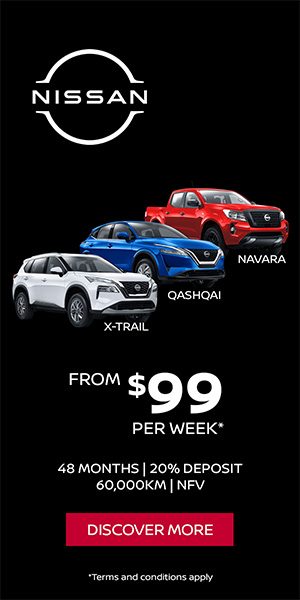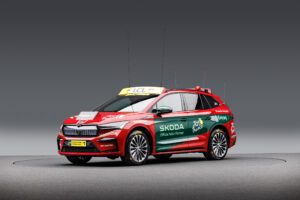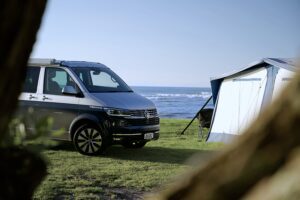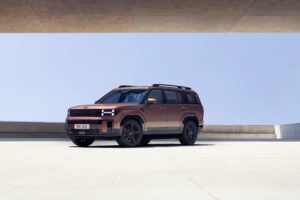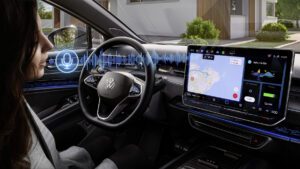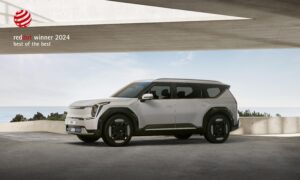With an aggregated figure of almost 5 months living in campervans of all shapes and sizes, I think I can call myself an enthusiast of #thatcamperlife. And while it is somewhat possible to review a campervan in the city, when Volkswagen New Zealand handed me the keys to their California Ocean for the Matariki long weekend, I knew that I owed it a proper road trip to experience everything the this house on wheels could offer.

The California builds on a tradition that Volkswagen has had for decades now, where they get a van from their lineup and implement a pop-up roof and amenities to make it into a campervan that has the space you need while still driving as best it can when it’s time to hit the road. The two tone paint work makes it much more special, differentiating it from the panel spec and also makes a nod to the past iterations of the car. Amenities include a fridge, stove, sink, a hot water “shower” and plenty of storage, all things that make more sense to use if you’re away from home, so it’s time to hit the road.



And so, our journey started as all long weekend trips departing from Auckland start: traffic, and tons of it. We faced a two hour delay with heavy traffic all the way to Drury, where the California’s adaptive cruise shone (this is the best feature introduced to cars in the last 15 years, and I will die on this hill). While not able to handle bumper to bumper, it made this first part less frustrating and gave me the opportunity to acclimatise with what was going to be my accommodation for the next three days. I left in such a hurry to try and beat traffic that I forgot to take with me the backpack I had packed the day before, meaning that not only did I not manage to beat the delays, but I also had to slip in a quick shopping stop to buy toiletries, and some cheap changes of clothes.

We drove all the way to Mangakino, where we found a freedom camping spot. The California Ocean does not offer a toilet, so we filtered those suitable for non-self contained vans using an app we’ve been using for a decade now called CamperMate. Here, I got to pop-up the van’s roof for the first time, but not before using the Level feature to check for the flattest surface to do so. For both tasks, you use a screen mounted close to the rearview mirror. It is both touch sensitive and knob operated, uses VW’s design language and visuals, and doesn’t feel at all like an afterthought. This is also perceived in other places in the California, but more on that later.

The roof operation is achieved through one of the dedicated options on that screen, and can only be done with the engine running. It gets all warnings and disclaimers out of the way before it starts moving, and when it does, it doesn’t take long before the motors stop whirring and the operation is done. This will allow you to stand upright in between the seats, but only if you first push upwards the actual headliner, as it doubles as the mattress support for those sleeping on the canvas “tent” you just set up.

That bed is not rated for someone of my weight, so our option was to lay on the one provided by the back seats, and getting to sleep was easy after the day of work and the driving. The next morning was a cold one, with negative temperatures prior to the sunrise. Not that you could ever tell from inside the van, as I used another of the features available on the camper screen: an auxiliary heater. It uses diesel to operate, and regularly pumps hot air through the driver’s B pillar in a very easy to set up and well integrated manner.
In hindsight, I see I made the heater’s work harder by leaving the roof up, as it had to fight physics and the lack of insulation of the canvas, but it still kept us warm the whole night. The same couldn’t be said about the poor souls camping in a tent close to their overlander Suzuki Jimny, however.

It was time to get back to driving, and here, another interesting feature of the California came in handy: upon further reading, I learned it also has a coolant heater that helps bring it to temperature quicker, and that explains why we had warm air invading the cabin so quickly, meaning I didn’t have to rely solely on the heated seats and coffee to bring yours truly to operating temperature, especially after snapping these pictures outside.


Next stop, Napier. We parked in between two 6-berth campervans for a quick bite, so it was time to set up “Kitchen Mode”. The two front seats swivel 360 degrees so you can have them facing backwards for the whole family to use the table. While this is a very interesting feature, it is very finicky to interact with. You have to remove arm rests completely out of the way, fully “close” the seats by moving the backrest forwards and be at just the perfect seat position so the assembly will turn. After a few tries I got the go of it, but it is definitely not as intuitive as the rest of the set up.

I popped the roof up again so that I could stand when inside of the van and opened the front “window” of the tent to let light in, and the California became an instant hit with the other campers. I got thumbs up, smiles and curious questions about the setup, which I was happy to oblige. The van grabs a lot of attention from those in the know, but eventually we had to go back to driving towards Clifton. And driving is something that is actually pleasurable in this VW: the good seating position, the choice for the materials for surfaces you interact with and even the dynamics are all highlights. The interior doesn’t look like the one from a work van, and with the digital drivers display and wireless phone connectivity, all of your tech and customisation needs are catered for.

Once in Clifton, it was once again time to set the van in bedroom mode. The back seat has a set of tracks it can slide on, and once it reaches the forward-most position, you can use another pull to drop it flat, and then pull the mat the covers the whole assembly to give it some more comfort. It is easy as can be, and convenient enough that you can even ratchet up the back rest to have a good leaning position to binge watch the latest guilty pleasure Netflix series.


The next day included a drive towards the beautiful town of Havelock North, and in a windier portion of the road, I leaned a little bit more on the Cali. In campervan trips, the driving is usually the dreaded part, due to the compromised dynamics, the noises of everything clanging and you being the eventual nuisance on the road. Not the case here – everything in this camper project is thought like so from the get-go, so there are no things flying around on the bends, and the collapsed roof gives it a van-like footprint, making it easily the most competent campervan I have driven so far. It drives very European, poised and slightly firm, certainly as a result of the 18 inch tyres rolling on 45psi of pressure.
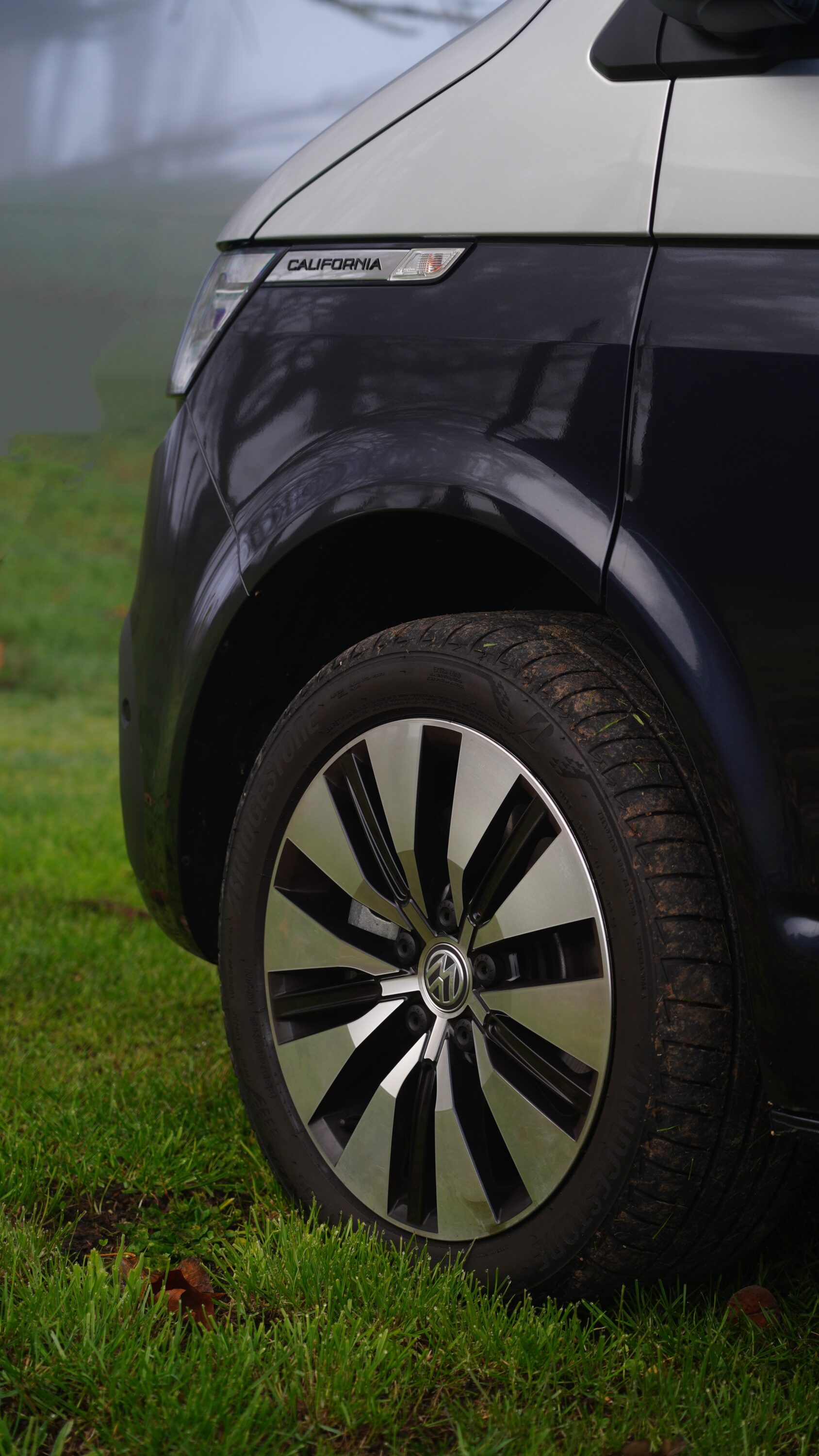
Our arrival to Havelock was the stop for refuelling, and it seems like the perfect point to wrap up. There is just so much to talk about (and show) with the California that I decided to split this story in two posts. Keep your eye peeled for part 2, and thanks for reading this far!

